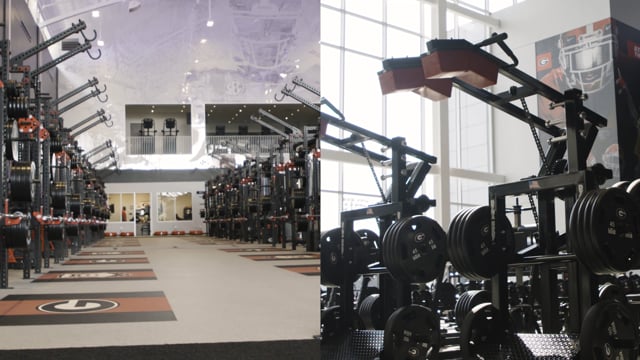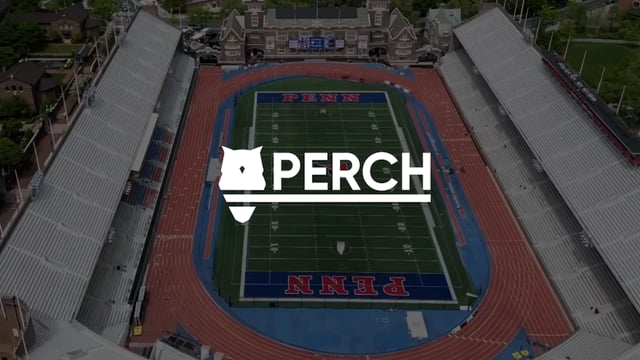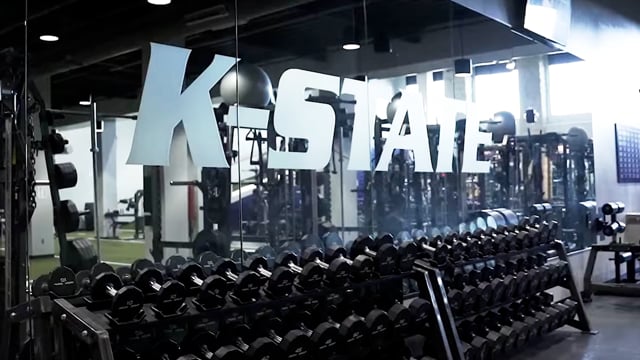VBT Through the Times - Sports Technology

A QUICK HISTORY LESSON
Velocity based training is not a new concept for sports technology. VBT in its recognizable form today has been around since the 1990s. The concept of using velocity in a weight room came about in the mid to late 1980s through Russian sports scientists, Yuri Verkhoshanskii and RA Roman [1-2]. It was then popularized by Louie Simmons at Westside Barbell, and later by Dr. Bryan Mann through his research and publication of his book, Developing Explosive Athletes [10-11]
Westside Barbell began incorporating VBT in a weight room setting in the 1990s. Louie Simmons published an article in Powerlifting in 2002 about the successful experiment using Tendo Units and VBT started catching on. By using methodologies to improve explosive strength thought up from researchers Vladimir Zatsiorsky, Mel Siff, and Yuri Verkhoshanskii [15-16] regarding bar speed and dubbed the “Dynamic Method,” powerlifters started using velocities to quantify the training program.
In the mid 2000s, Bryan Mann was a first year doctoral student with a project and a deadline. He ran a statistical correlation between Olympic lifts and vertical jumps thinking it was a no-brainer. The common assumption was that coaches prescribe and athletes perform Olympic lifts in order to improve explosive power. Vertical jumps were the performance test commonly used to inform vertical explosive power. What was shocking was that Mann found no statistically significant relationship between the Olympic lifts and vertical jump. Meaning as weight in Olympic lifts increased, there was a point of diminishing returns for improvement in the performance indicator–vertical jump. Enter: Velocity.
PRACTICAL IMPLEMENTATION TODAY
Velocity Based Training has been gaining much more traction since Simmons’ publications in the early 2000s. More practitioners are experimenting with the sports technology in a variety of environments, more case studies are made available, and more companies are building better products to solve practical issues in the weight room setting and truly quantify weight room work load and neuromuscular strain.
The really neat thing about using velocity is that it is not a totally new concept. Thanks to research from González-Badillo & Sanchez-Medina we know that velocity zones very closely follow percentage of RM [9,13,22] . Periodization, therefore, can follow a similar structure to what is commonly taught (ie Percentage Based Training), but instead of a percentage of an RM, we can use corresponding velocities to adhere to what the athlete is capable of on that day, and train for that specific adaptation with precision.
The chart below will hopefully provide some clarity for this. You may notice both Speed-Strength and Strength-Speed are classified as 40%-60% of RM, this is due to the percentage zone being “unquantifiable” and hard to nail down as a percentage, which makes the case for using velocity even stronger.

In the strength & conditioning, and sports performance world alike, there are numerous names for every exercise, every phase, and every adaptation. With your periodization, whether you call your phases accumulation/volume/hypertrophy, or intensification/strength, or realization/power there is a velocity zone that will correspond with each phase. Depending on how you like to program, it may be up to you to determine which zone is right for the adaptation you want to focus on with your athletes. Hopefully these guidelines help.
Equally common in strength & conditioning and sports performance is the use of pyramids to help illustrate priorities from a foundational point of view and up. Velocity Based Training can be visualized using this as well, as seen below. The top of the pyramid is not any less important than the bottom, but it has to be built towards with a strong foundation initially. If the chart above does not appeal to you, perhaps this pyramid will help clarify.

Velocity Based Training does not have to be a confusing concept, nor does bringing sports technology into the weight room need to feel daunting. On the contrary, it can be incredibly easy to understand and much more accessible than most realize. Using a VBT device in the weight room setting can help coaches adjust on the fly by serving as immediate and objective feedback, helping your athletes understand when to push it or when to regress contingent on the speed, weight, and desired traits. As a general rule of thumb: if the athlete is below the speed zone, the weight is too heavy and they need to take some weight off the bar. If the athlete is above the speed zone, the weight is too light and then need more load on the bar. Much more research is needed regarding fluctuations in loading based off of velocity, and even with research, each athlete is unique. Despite this, anecdotally many strength coaches implementing VBT will use 1 lb for every 0.01 m/s as a starting point to add or subtract load. Try it out and see if it works for you and your athletes, then let us know what you think or what method you prefer.
“Velocity Based Training does not have to be a confusing concept. On the contrary, it can be incredibly easy to understand and much more accessible than most realize.”
Our hope is that through this blog and through our sports technology we can help address some of the questions and hesitations around VBT, and encourage more coaches to use and experiment with VBT to enhance the potential of and reduce the fatigue in their athletes. In this way, with more feedback, precision, and data points, we can improve our programming, decrease injury rates, and maximize what our athletes are capable of in the weight room and on their field of play over the duration of their career.
THE FUTURE OF SPORTS TECHNOLOGY AND VBT
The field of sports analytics and sports technology is due to be worth over 4.5 Billion dollars by 2021. Companies are growing, data is made available and analyzed. Positions of “sports data analyst” “athletic metrics analyst” and “sports scientist” are rapidly being created across the country and the world. Sports technology, in other words, is a burgeoning field in its infancy with massive potential and a long road ahead of it.
However, we believe it will only be able to make a lasting impact if technology and technology companies can improve in several key areas:
1) HASSLE FREE TECHNOLOGY
In most cases, measurement equipment in the weight room is an add-on. It is something that you pull out every now and again during specific training periods or testing days. Our research has shown that a big reason for this, is a lack of practicality. If weight room technology and velocity based training is going to ingrain itself into daily training, it must become hassle free.

2) IMPROVED RESEARCH AND EDUCATION
Data should not be collected for data’s sake. Practitioners and companies need to collect the right data, they need to know what to do with this data once it is collected, and resources need to be created to educate athletes and coaches on how to leverage this data to enhance performance. Though much more research is needed, we have seen there are some promising studies on quantifying speed of movement for both younger and older populations in order to train for adaptations specific to those populations [17-21]. We are seeing amazing growth in the research of of velocity based training and the sharing of practical knowledge.
3) AUTOMATED INSIGHTS
As covered in section two, practitioners must know what to do with the data they collect, but at a certain point, it no longer becomes practical to collect every single piece of data. A team of sports scientists do not have the bandwidth to analyze the thousands of data points collected, let alone individual strength coaches with already demanding schedules. The data collection technology must advance from simple measurement tools, to tools that can aggregate and analyze data and raise red flags. Coaches should not have to decide if they should monitor their athletes, simply because they do not have the bandwidth to analyze what is collected.
Perch’s mission is to help in all 3 of these areas, helping usher velocity based training and sports technology into the future.
CONCLUSION
Although technology will begin to play a larger role in the weight weight room, coaches will continue to be the most important piece of the puzzle; people like you with their boots on the ground and deep in the trenches are constantly seeking the next best way to help your athletes succeed. Your unwillingness to rest until you have developed the perfect program, until you have maximized your athletes’ potential with care and precision is what will create the next generation of athlete, and it’s what inspires us to keep working harder. We want to make your job a little bit easier. By sifting through decades of research, making it easily accessible to you, and working to solve your weight room problems by continuing to develop our technology, we look to stand beside you on your quest.
Using velocity we can learn more about athletes strengths and weaknesses, their neuromuscular fatigue in real time, and provide them with the tools to succeed in their chosen sport. If intensity can be considered a specificity for training, it may well be the most important one to focus on [23]. Now that quantifying intensity can be done with increasing ease, training athletes, younger and older populations could look similar from a technology perspective for years to come [17-21]. More research is needed, but as stated above, the field is young and growing fast; we are excited to see where it goes.
OTHER RELEVANT POSTS!
Want to find out what kind of sports technology is right for you? Check out our post on finding the right VBT system for you!
Want to learn more about the basics of VBT? Check out Perch’s VBT Dictionary!
Curious about how different populations can utilize VBT? Check out our VBT for specific populations series!
Read more about Perch here! And check out Product Videos here. And our support website here.
Back to basics? Review the origins of VBT and Strength Training!
SOURCES
- Verkhoshanskiĭ, I. V., & Charniga, A. (1986). Fundamentals of special strength-training in sport. Livonia, MI: Sportivny Press.
- Roman, R. A., & Charniga, A. (1988). Trenirovka tyazheloatleta = The training of the weightlifter. Livonia, MI: Sportivny Press.
- Jidovtseff, B., Harris, N., Crielaard, J., & Cronin, J. (2011). Using the load-velocity relationship for 1rm prediction. Journal of Strength and Conditioning Research, 25(1), 267-70.
- Jovanovic M, and Flanagan EP. (2014). Researched applications of velocity based strength training. J. Aust. Strength Cond. 22(2)58-69.
- Banyard, HG, Nosaka, K, and Haff, GG. Reliability and validity of the load–velocity relationship to predict the 1RM back squat. J Strength Cond Res 31(7): 1897–1904, 2017.
- Cronin, J.B., McNair, P.J. and Marshall, R.N. Force-velocity analysis of strength-training techniques and load: implications for training strategy and research. Journal of Strength and Conditioning Research. 17: 148-155. 2003.
- Randell, AD, Cronin, JB, Keogh, JWL,Gill, ND, and Pedersen, MC. Effect of instantaneous performance feedback during 6 weeks of velocity-based resistance training on sport-specific performance tests. J Strength Cond Res 25(1): 87–93, 2011.
- Padulo, J, Mignogna, P, Mignardi, S, Tonni, F and D’Ottavio, S. Effect of different pushing speeds on bench press. Int J Sports Med 33: 376-80, 2012.
- Sanchez-Medina, L., and J. J. Gonzalez-Badillo. Velocity Loss as an Indicator of Neuromuscular Fatigue during Resistance Training. Med. Sci. Sports Exerc. Vol. 43, No. 9, pp. 1725-1734. 2011.
- Mann, B., Kazadi, K., Pirrung, E., & Jensen, J. (2016). Developing explosive athletes: Use of velocity based training in athletes. Muskegon Heights, MI: Ultimate Athlete Concepts.
- Mann, J., Thyfault, J., Ivey, P., & Sayers, S. (2010). The effect of autoregulatory progressive resistance exercise vs. linear periodization on strength improvement in college athletes. Journal of Strength and Conditioning Research, 24(7), 1718-1723
- Zourdos, M. C., Dolan, C., Quiles, J. M., Klemp, A., Jo, E., Loenneke, J. P., … Whitehurst, M. (2015). Efficacy of Daily 1RM Training in Well-Trained Powerlifters and Weightlifters: A Case Series. Nutricion Hospitalaria: Organo Oficial de La Sociedad Espanola de Nutricion Parenteral y Enteral.
- González-Badillo, J. J., & Sánchez-Medina, L. (2010). Movement velocity as a measure of loading intensity in resistance training. International Journal of Sports Medicine.
- Wulf, G., Shea, C., & Lewthwaite, R. (2010). Motor skill learning: Motor skill learning and performance: A review of influential factors. Medical Education, 44(1), 75-84.
- V.M. (1995) Science and Practice of Strength Training Champaign, IL: Human Kinetics.
- Siff, M. C., & Verkhoshansky, Y. V. (1999). Supertraining: Special strength training for sporting excellence : a textbook on the biomechanics and physiology of strength conditioning for all sport. Denver: Supertraining International.
- Henwood, T. R., & Taaffe, D. R. (2006). Short-term resistance training and the older adult: The effect of varied programmes for the enhancement of muscle strength and functional performance. Clinical Physiology and Functional Imaging, 26(5), 305–313
- Fielding, R. A., LeBrasseur, N. K., Cuoco, A., Bean, J., Mizer, K., & Fiatarone Singh, M. A. (2002). High-velocity resistance training increases skeletal muscle peak power in older women. Journal of the American Geriatrics Society, 50(4), 655–662.
- Porter, M. M. (2006, April). Power training for older adults. Applied Physiology, Nutrition and Metabolism.
- Sayers, S. P., Gibson, K., & Bryan Mann, J. (2016). Improvement in functional performance with high-speed power training in older adults is optimized in those with the highest training velocity. European Journal of Applied Physiology, 116(11–12), 2327–2336.
- Davies, T. B., Kuang, K., Orr, R., Halaki, M., & Hackett, D. (2017, August 1). Effect of Movement Velocity During Resistance Training on Dynamic Muscular Strength: A Systematic Review and Meta-Analysis. Sports Medicine. Springer International Publishing.
- Jidovtseff, B., Harris, N. K., Crielaard, J. M., & Cronin, J. B. (2011). Using the load-velocity relationship for 1RM prediction. Journal of Strength and Conditioning Research, 25(1), 267–270.
- Young, W. B. (2006). Transfer of strength and power training to sports performance. International Journal of Sports Physiology and Performance.

Start Gathering Data With Perch Today!
Reach out to us to speak with a representative and get started using Perch in your facility.









































































.avif)

































